Your basket is currently empty!
The past two weeks, we have looked at two beautifully embroidered vestments from the Cathedral Treasury of Gdańsk, Poland. The first one was a white chasuble with Bohemian embroidery, and the second one was a red chasuble with locally produced embroidery. Both chasubles are on permanent display in the Germanisches Nationalmuseum in Nuremberg. Today, I am going to show you a cope kept at the Sankt Annen Museum in Lübeck. This museum rotates parts of the Cathedral Treasury regularly, and the cope is not currently on display.
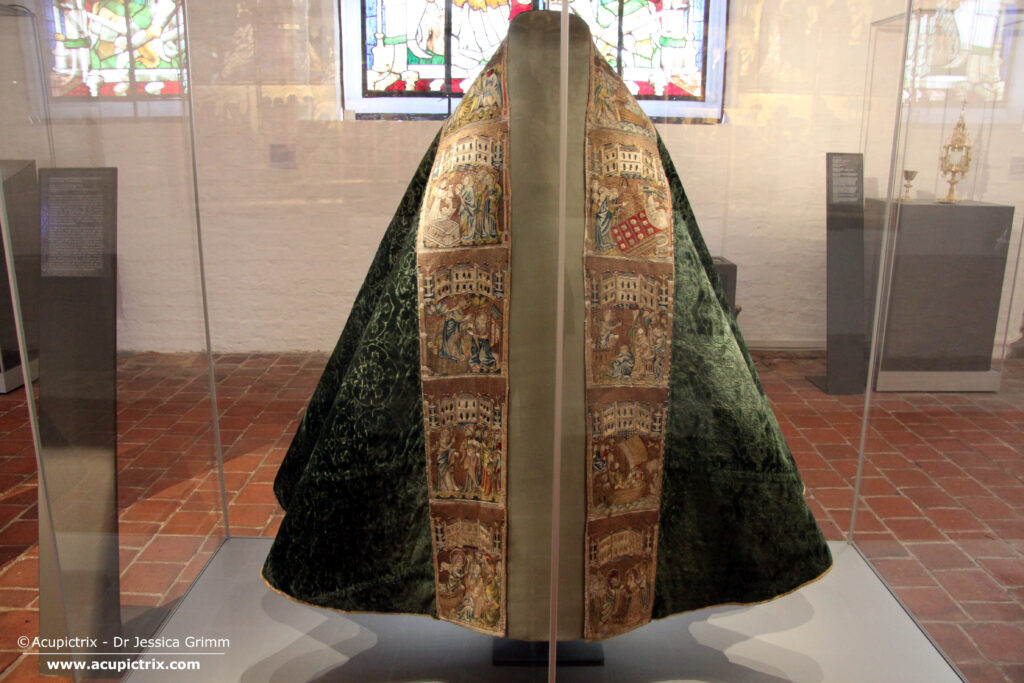
The embroidered orphreys on the green cope M25 in the Sankt Annen Museum show the legend of Mary Magdalene. The story runs from top left to bottom right. Apart from the second (Noli me tangere) and third (Three Marys at the tomb) scenes in the left column, the other scenes are unique for embroidered vestments. Allegedly, Mary Magdalene landed in Marseille, France, after the Resurrection. There was a strong cult in France in the Middle Ages that eventually spread to other parts of Europe. Most notably, Lübeck after AD 1227, when it won a battle against the Danes on Mary’s feast day. Both Lübeck and Gdańsk/Danzig are Hanseatic towns. Their merchants would have had significant dealings with the port of Marseille.
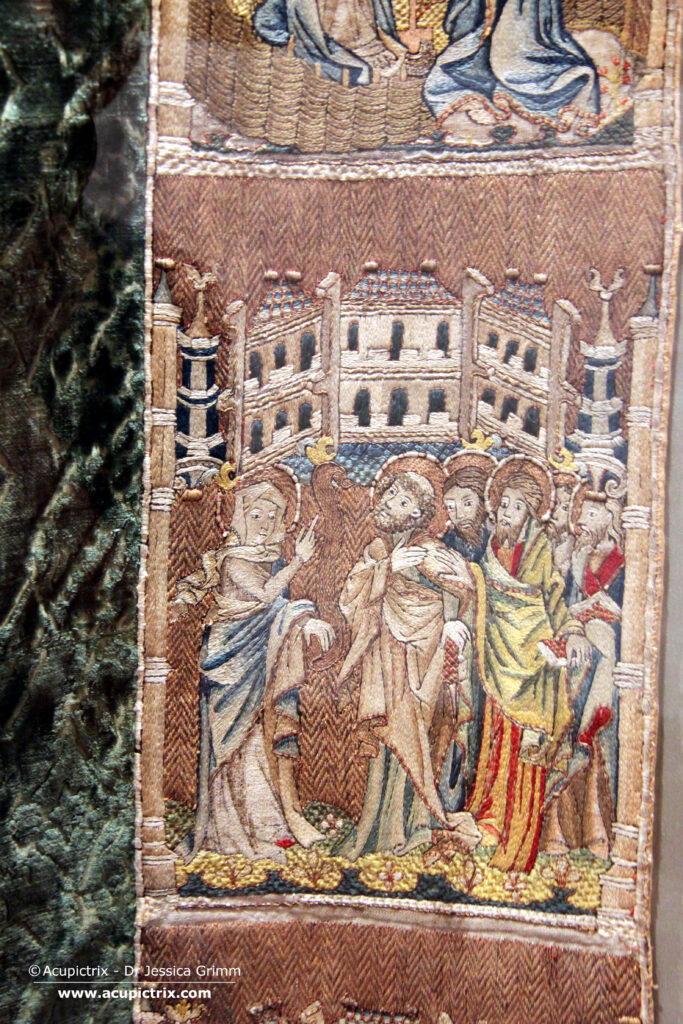
Unfortunately, the embroidery techniques used are not very specific and cannot help with provenance. There’s fine silken split stitch for the figures and regular surface couching for the golden background – in this case, a chevron pattern couched with red silk. And there’s laid work for some part of the design. In the above scene, where Mary Magdalene tells the Apostles that Jesus has risen, the grassy ground is laid work with additional silk embroidery (flowers) on top. The courtyard of the castle in the background is also worked in laid work.
We also see white string being used to edge the halos. This white string is further partly embellished with silken stitches in white and red. Maybe there were once freshwater pearls on top, too. Spaced out so that the white silk would cover the gap.
The technique used to define the roof tiles on the roof of the castle in the background is very effective. The embroiderer lays a single gold thread in coils to imitate individual roof tiles. This technique is somewhat specific and might help with pinpointing the provenance of this embroidery one day.
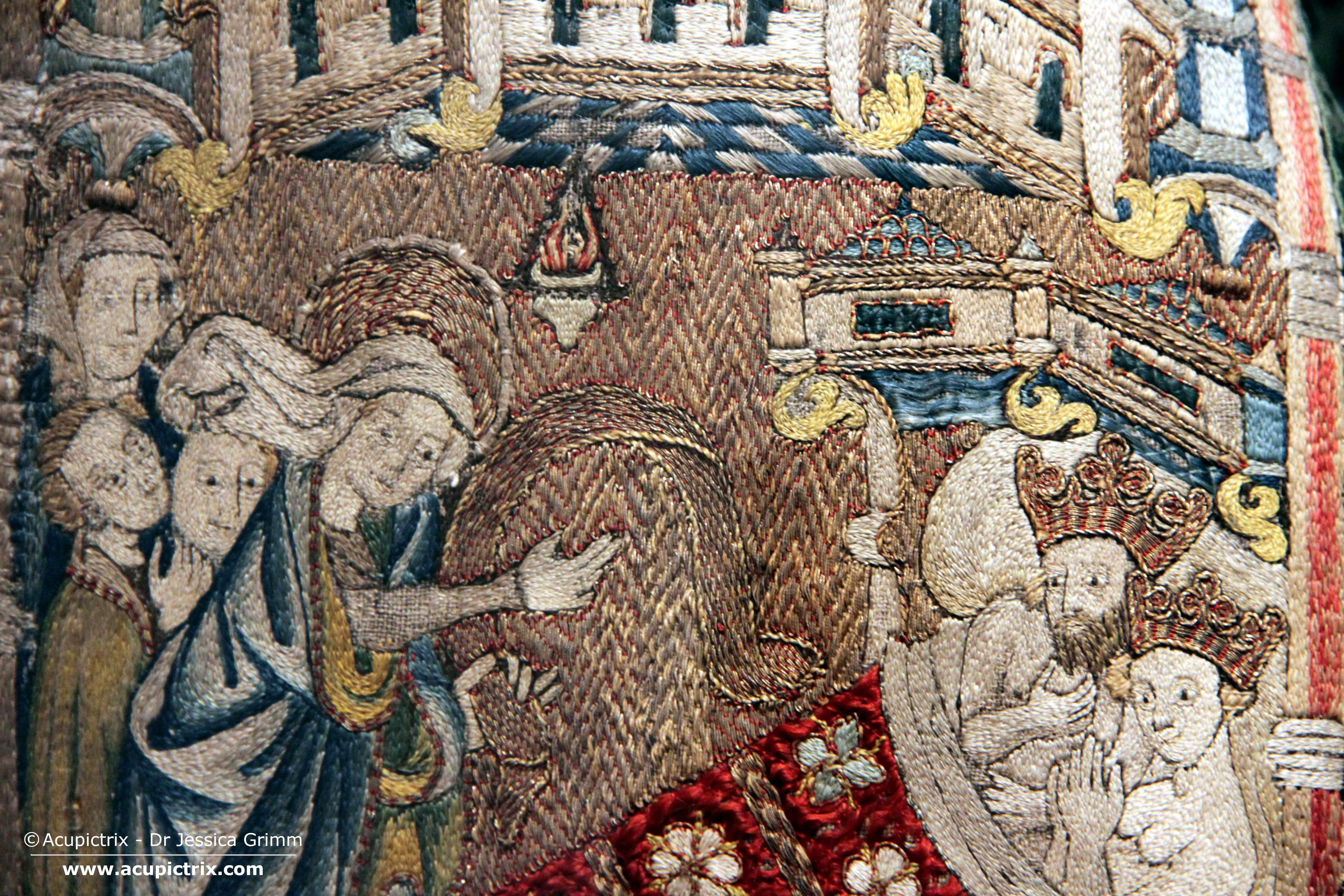
The embroidery is executed on a double layer of linen. The top layer is quite fine, with a 38-43 by 48 count; as you can see from the numbers, neither evenweave nor extremely regular. The bottom layer is much coarser with 23 by 25-28 count. The literature says that the gold thread used is membrane gold or silver wrapped around a silken core – yellow for the gold and white for the silver. However, I think this is a regular passing thread. The gold threads have hardly tarnished and are not very worn.
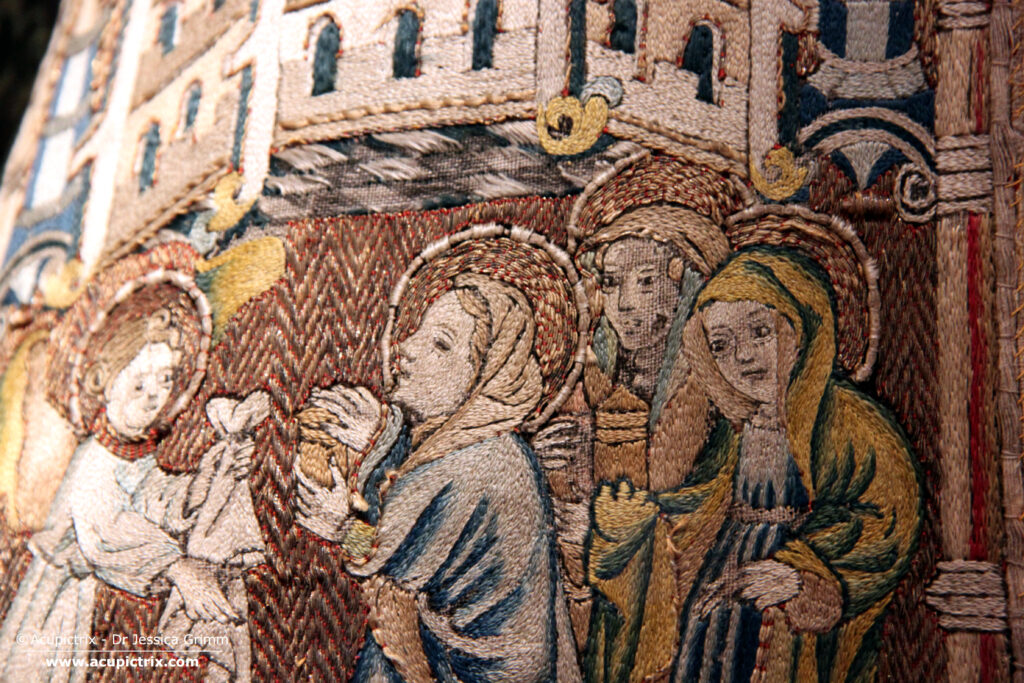
The design drawing isn’t a standard line drawing. There seems to be some shading in some parts. Look, for instance, at the tiles in the courtyard of the castle in the above scene (Three Marys at the tomb). The tiles have been coloured-in in a checkerboard pattern.
So, where was this embroidery made and when? The embroidery style would fit places as far-flung as Prague (it looks a bit Bohemian, compare with the white chasuble), the Southern Netherlands, and France. The latest literature chooses France, where the legend of Mary Magdalene was very popular. The fancy Burgundian clothing Mary Magdalene wears in the first scene dates the embroidery to the middle of the 15th century. As the embroidery is likely still attached to its original Italian silken velvet, this also helps to date it to after AD 1460.
All in all, this is a stunning piece of 15th-century embroidery, fit for an important Cathedral Church such as St Mary’s in Gdańsk/Danzig.
Literatur
Borkopp-Restle, B., 2019. Der Schatz der Marienkirche zu Danzig: Liturgische Gewänder und textile Objekte aus dem späten Mittelalter. Berner Forschungen zur Geschichte der textilen Künste Band 1. Didymos, Affalterbach.
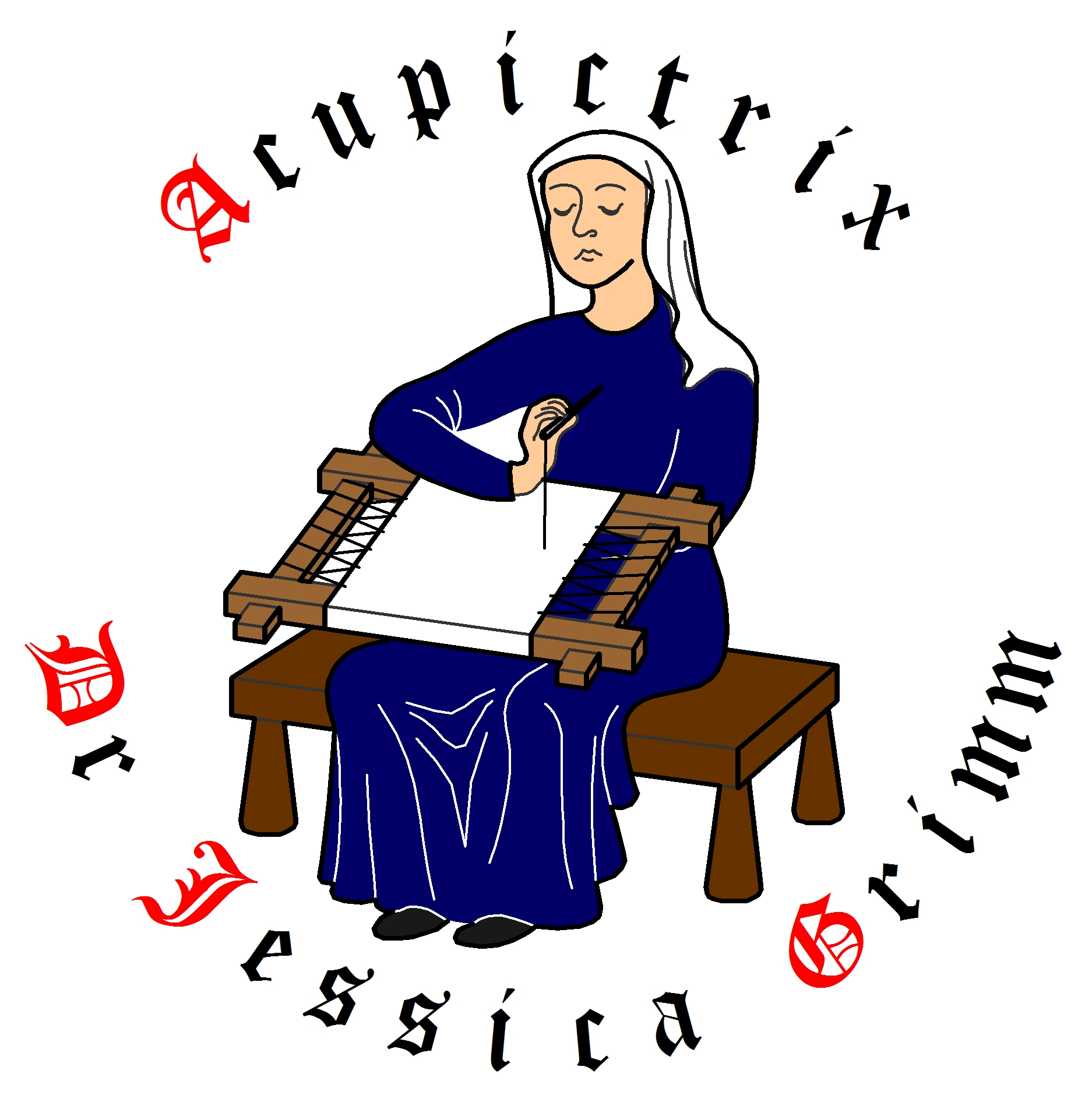
Leave a Reply